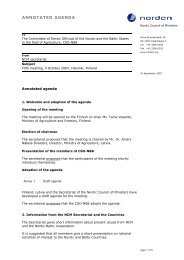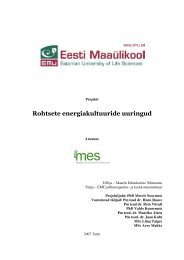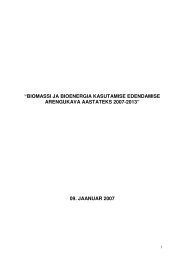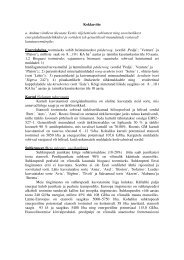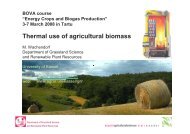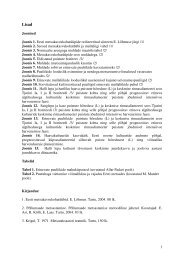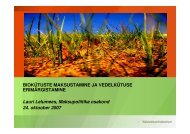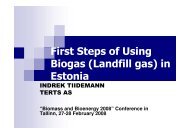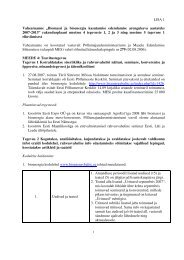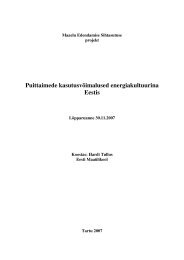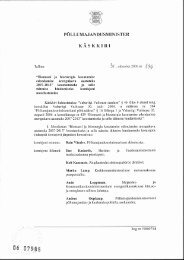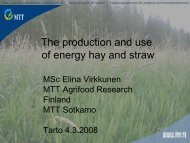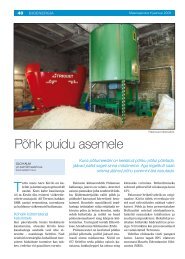Põllumajandusministeeriumi ja Maaelu ... - bioenergybaltic
Põllumajandusministeeriumi ja Maaelu ... - bioenergybaltic
Põllumajandusministeeriumi ja Maaelu ... - bioenergybaltic
Create successful ePaper yourself
Turn your PDF publications into a flip-book with our unique Google optimized e-Paper software.
Estimation of the land resources of Estonia<br />
(Compiled by A. Astover, H. Roostalu, L. Kukk,<br />
A. Padari, P. Muiste, E. Suuster, A. Ostrouhova, I. Melts)<br />
Summary<br />
The main goals of the project Land Resource (Maaressurss) were to:<br />
• determine potential land resource for bio-energy production;<br />
• determine abandoned land area and compose corresponding map layers;<br />
• describe and analyse factors affecting potential re-use of abandoned agricultural land<br />
for bio-energy production;<br />
A rapid decline in agricultural land use has occurred in Estonia since the restoration of<br />
independence in 1991. The scale of this decrease in arable land was the most drastic change in<br />
the whole of Europe, and was higher than other post-Soviet European countries by a factor of<br />
3.9. The use of abandoned agricultural areas is considered as one potential way of increasing<br />
bio-energy production.<br />
General review of land resources has made according to the Estonian Basic Map. The<br />
accuracy and content corresponds to the mapping scale of 1:10,000. The corresponding areas<br />
must be further corrected with line objects. Total potential land resource for biomass<br />
production is in Estonia approximately 3.7 million hectares. The largest proportion is covered<br />
by forests (2.4 million hectares).<br />
Abandoned agricultural areas were identified using following map layers: basic map, base<br />
map, orthophotos, cadastre map, and field layer (1.13 mil. ha) of Agricultural Registers and<br />
Information Board (ARIB) and databases of Common Agriculture Policy (CAP) payments in<br />
2007. Areas without any applications for CAP area payments were considered abandoned.<br />
ARIB field parcels without any applications for CAP area payments were considered entirely<br />
abandoned and others were considered as partially abandoned and others as partially<br />
abandoned.<br />
The total abandoned agricultural land is about 430 thousand hectares but from that 144<br />
thousand hectares are outside of ARIBs field parcels. In 2007 there were about 840 thousand<br />
hectares fields that was covered by CAP subsidies and 286 thousand hectares without<br />
applications of which entirely abandoned field parcels formed 123 187 hectares (on 49 190<br />
fields). Consequently about 163 thousand hectares are located on fields which are partially in<br />
use. The highest abandoned land resource in ARIB fields is in Tartu, Lääne-Viru, Harju and<br />
Saare counties. The share of abandoned agricultural land is highest in Hiiu (41%) and smallest<br />
in Järva county.<br />
Thematic maps for agricultural land were composed for every county. ARIB`s fields were<br />
distributed to classes according to the proportion of abandoned land. The fields and grasslands<br />
that weren’t registered in 2004 in ARIB`s registers were extracted from basic map and also<br />
considered as potentially available land resource for bioenergy production.<br />
13



